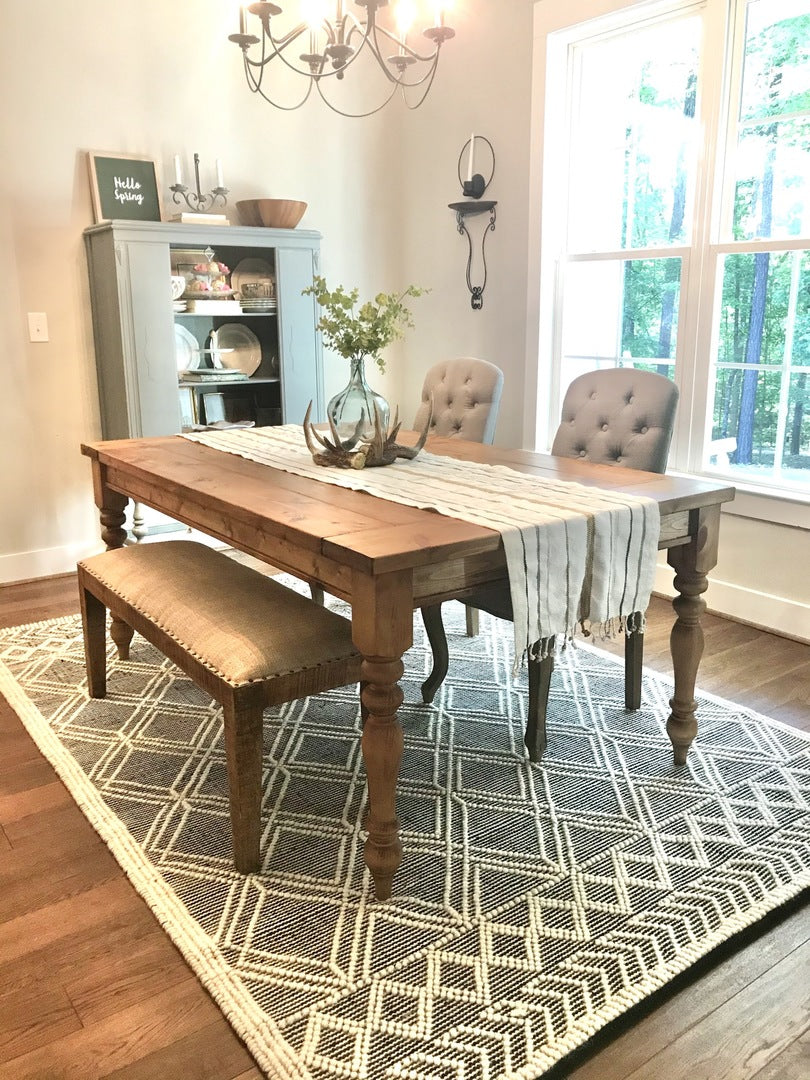Dining Room Table Legs: What to Take into consideration Prior To You Purchase
Dining Room Table Legs: What to Take into consideration Prior To You Purchase
Blog Article
A Thorough Appearance at Dining Table Leg Styles: Discovering the Perfect Suit
Selecting the appropriate table leg design is vital for both visual charm and functional performance. Typical 4 legs use timeless beauty and security, while the pedestal base gives boosted legroom and a contemporary look. For those with larger tables, trestle legs ensure tough support, whereas hairpin legs introduce a mid-century modern-day vibe with their minimalist layout. The x-shaped legs blend contemporary style with boosted security. Each of these options brings one-of-a-kind benefits, making the selection greater than just a matter of preference. Discover better to uncover which style perfectly complements your dining area and lifestyle.
Traditional Four Legs
Among the different types of eating table leg designs, the typical four-leg design remains a timeless option for several homes. 4 legs provide well balanced support, making sure the table remains steady and capable of bearing substantial weight (dining room table legs).
From a visual point of view, the conventional four-leg layout can be quickly adjusted to various interior designs. Whether crafted from wood, metal, or a combination of products, these legs can be delicately carved, smooth and minimalistic, or anything in between. Their convenience permits them to complement both rustic and modern setups flawlessly.
Additionally, the straightforward structure of the four-leg layout helps with convenience of movement and placement within a space. Unlike even more facility bases, this design decreases obstructions, offering ample legroom for restaurants. In summary, the standard four-leg table leg design marries sustaining elegance with functional performance, making it an astute selection for those looking for both kind and feature in their dining furniture.
Stand Base
Typically commemorated for its stylish and space-efficient style, the pedestal base is a distinguished option to the typical four-leg configuration in table leg styles. This unique base usually includes a single main column sustaining the table top, which can differ in kind, from ornately carved wood to streamlined, modern-day steel. Among the primary benefits of the stand base is its capacity to make best use of legroom and seating flexibility. Without corner legs, diners are afforded higher freedom of motion, making it a suitable choice for round and oblong tables that advertise even more intimate and inclusive gatherings.
Furthermore, the pedestal base's main support can handle significant weight, enabling for using heavier table tops, such as marble or thick hardwood. This stamina coupled with its visual convenience makes the pedestal base a preferred choice in both typical and modern indoor settings. It can effortlessly integrate with various design themes, from classic elegance to minimalist modernity. The central column itself supplies a canvas for complex designs and imaginative expressions, including an element of aesthetic passion underneath the table. In summary, the pedestal base integrates performance with style, making it a refined and sensible option for diverse dining settings.
Trestle Legs
Trestle legs offer a robust and ageless structure for eating tables, defined by their horizontal cross-bracing and sturdy support beams. Stemming from middle ages times, this style has actually developed yet retained its important structure, making it a perennial fave in both typical and contemporary setups. The main trestle beam of light, often supported by 2 or more vertical read review articles, uses exceptional security, enabling bigger table lengths without the demand for added legs.
A substantial advantage of trestle leg tables is the ample legroom they use. Unlike tables with 4 edge legs, the absence of obstructions at the table's edges supplies unblocked room for chairs and restaurants, improving convenience and access. This makes trestle tables ideal for fitting larger events, whether in an eating room or a reception hall.
The visual versatility of trestle legs is noteworthy. Offered in a variety of products such as wood, metal, and composite, they can be finished to match a large range of indoor styles. From rustic farmhouse to streamlined modern designs, trestle legs can be personalized to fit individual tastes. Their enduring appeal and functional benefits make trestle legs an engaging selection for those seeking both design and functionality in their dining table.
Barrette Legs

The charm of barrette legs exists in their simplicity and flexibility - dining room table legs. Readily available in a series of materials, consisting of steel and brass, they can be ended up in many shades to enhance different indoor designs. Whether matched with a rustic wooden table top or a contemporary glass surface area, hairpin legs effortlessly blend capability with a touch of classic appeal
Resilience is another noteworthy function of hairpin legs. Regardless of their delicate look, these legs are crafted to bear substantial weight, making sure the eating table stays secure and safe. Furthermore, they are fairly very easy to install, making them a preferred choice for do it yourself lovers and expert furniture manufacturers alike.
X-Shaped Legs

Built from products such as steel, timber, or a combination of both, X-shaped legs can be customized to match different design preferences. Steel legs frequently provide a sleek and commercial feeling, suitable for loft-style houses and contemporary eating spaces.
Moreover, the design behind X-shaped legs guarantees even weight distribution, reducing the danger of tottering and enhancing resilience. This makes them particularly fit for larger dining tables that call for added assistance. In essence, X-shaped legs blend practical engineering with contemporary aesthetics, making them a classic selection for diverse dining environments.
Verdict
A detailed understanding of dining table leg styles exposes the unique attributes and advantages of each style. Typical four legs offer security and classic charm, while stand bases provide legroom and a streamlined appearance. Trestle legs make sure robust support for bigger tables, and barrette legs present a mid-century modern-day aesthetic. X-shaped legs integrate modern design with improved security. Choosing the proper other leg style makes certain both functional and aesthetic fulfillment in any type of dining space.
Report this page